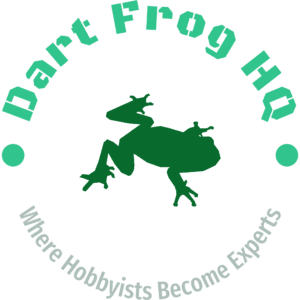Location & History
Found in the humid lowlands spanning southern Nicaragua to Colombia’s Golfo de Urabá. They’re also present on the Pacific side, from southwestern Costa Rica through Panama to the lower Atrato River drainage in western Colombia, at elevations of 0-800 meters. An introduced population exists in Oahu, Hawaii, USA. The species was first described by Girard in 1855.
Appearance & Behavior
- General Description: Among the larger Dendrobatid species, its look varies widely, particularly in Panama. Their coloration features shades of green, blue, or brown set against black, dark brown, light brown, to near-white backgrounds. Note that these morphs are unique subpopulations that should not be mixed.
- Behavior: The species can be skittish, especially when compared to D. tinctorius. Variations in color patterns, boldness, and size can be found across different populations.
- Specific Morphs:
- Nicaragua Green & Black: Moderate-sized with green and black patterns.
- Costa Rica Green & Black: Classic form in the hobby, but its exact origin is sometimes ambiguous.
- Hawaiian: Introduced form with metallic greenish-yellow to brown/black shades and variable patterns.
- Campana/Kahlua & Creme: Displays a spectrum of brown to green/blue on different backgrounds.
- Blue & Black: Recognized for its bright blue body on a black background.
- Highland Bronze: Turquoise and bronze variants from Panama’s higher elevations, needs cooler temperatures.
- Panama Farm Raised Auratus: Several variants introduced after the millennium, each with unique characteristics.
Care Recommendations
- Temperature: 70-80º F during the day and can drop to 65º F at night.
- Habitat Setup: Similar to D. tinctorius. A pair can fit in an 18″ x 18″ enclosure, but larger spaces are preferable. These frogs are climbers and will utilize height, surfaces like sturdy leaves, ledges, and branches.
Breeding & Offspring Care
- Mating Rituals: They share courtship behaviors with D. tinctorius and produce a soft buzzing call.
- Breeding: Pairs work best, but group breeding is also possible. Egg consumption might be an issue with multiple females or inadequately sized tanks.
- Tadpole Care: Don’t rely solely on algae-based diets. When they metamorphose, they’re sensitive to stress but aren’t particularly challenging to care for.
- Feeding: They feed on primarily on melanogaster fruit flies, adults will accept hydei fruit flies a don’t necessarily need springtails but will snack on them.



